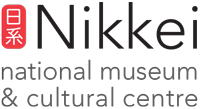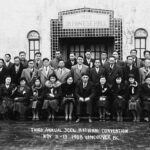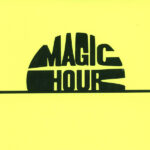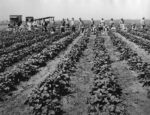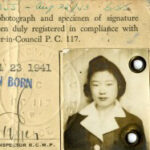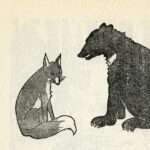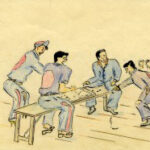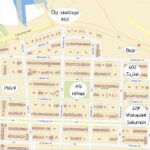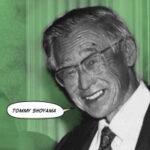Season 4: Nikkei Women
During the run of the “Iron Willed: Women in STEM” exhibition, we will be sharing stories of Nikkei Women. Lives of remarkable Japanese Canadian women who have survived through the Japanese Canadian internment will be presented by Julie Tamiko Manning. Subscribe now on your favorite podcast platform so you don’t miss an episode and tune in weekly.
July-September 2021
Season 3: Marpole Monogatari
The Sounds Japanese Canadian To Me podcast features a new series Marpole Monogatari on life at home, work, and in the community for Japanese Canadians in pre-War Marpole. Hear David Suzuki’s father talk about the birth of his twins, as well as Joy Kogawa singing a favourite song from kindergarten. Hear Mush Arima talk about buying a chicken from David Suzuki’s grandmother, along with other stories of triumph and tragedy from former residents, descendants, and associates.
June-July 2021
Stories From the Stage: 2020-21
In the age of social distancing, performing artist Kunji Mark Ikeda takes the reins of Sounds Japanese Canadian to Me to lead a series of in-depth conversations with some of today's most exciting Japanese Canadian performing artists.
Listen on our website, or subscribe on Apple Podcasts, Google Podcasts, Spotify, or Stitcher.
We acknowledge the support of the Canada Council for the Arts, Calgary Arts Development, and the Rozsa Foundation.



Season 1: 2013-2017
Sounds Japanese Canadian to Me is a monthly podcast hosted by Raymond Nakamura and staff members at the Nikkei National Museum. They sit around a microphone (usually in the museum's collection vault - for ambience) and have a casual discussion on a chosen Japanese Canadian topic. The goal of this endeavour is to entertain and wow people about Japanese Canadian history and culture.

Explore the fascinating world of Japanese Canadian history and culture with Sounds Japanese Canadian to Me. Our first series is hosted by Raymond Nakamura and Nikkei National Museum staff members features casual discussions on Japanese Canadian topics. Our second series, Stories from the Stage, features interviews between Kunji Mark Ikeda and some of the most exciting Japanese Canadian performing artists living through the age of social distancing.
Episodes
Episode 13 – Franchise
In light of the recent federal election, Raymond and Museum Intern Carolyn Nakagawa discuss Japanese Canadians’ long fight for the right to vote, from the British Columbia government’s ban against Japanese Canadians being added to the voters’ list in 1885, to the lifting of all restrictions on citizenship rights for Canadians of Japanese descent in 1949.
> read more→Episode 12 – Magic Hour
Raymond, Scott, and special guest Momoko Ito took some time this past spring to tour the museum’s Magic Hour exhibit, admiring the treasures of the collection quirkily curated by the Instant Coffee collective and sharing background stories on some of the items. Now, their conversation is an archive of this unique exhibit.
> read more→Episode 11 – Strawberry Farming in the Fraser Valley
Strawberry farming the the lower mainland was an industry pioneered by Japanese Canadians in British Columbia. At one point, Japanese Canadians were responsible for as much as 83 percent of strawberry production in the province.
> read more→Episode 10 – Hide Hyodo Shimizu
At 18 years of age, Hide Hyodo Shimizu was the first Japanese Canadian teacher to teach in British Columbia’s public school system. She was part of the delegation sent to Ottawa in 1936 to campaign for voting rights for Japanese Canadians, along with Samuel Hayakawa, Edward Banno and Minoru Kobayashi. She was responsible for organizing schools in the internment camps in British Columbia and later moved to Ontario to attend art college.
> read more→Episode 9 – Registration Cards
In March, 1941, the RCMP, under the orders of Prime Minister King, began registering Japanese and Japanese Canadians. Afterwards all people above the age of sixteen carried registration cards with them at all times. But wait this was nine months before Pearl Harbour?! Join Raymond and Alexis as they talk about the what, why and how of registration cards.
> read more→Episode 8 – Japanese Folklore (and its Creatures)
Join Raymond and Alexis as they talk about their favourite Japanese folklore creatures, characters and folks including daruma, kitsune and tanuki.
> read more→Episode 7 – Prisoner of War Camps
A day after Pearl Harbour, a large handful of Japanese Nationals were rounded up and shipped to Prisoner of War Camps in Canada. Later they were joined by Japanese Canadians. Over the course of the war, around 800 issei and nisei were sent to POW camps. In this episode, Raymond and Alexis look at the camps and the men who were put inside them.
> read more→Episode 6 – Pidgin…Bamboo English…Japlish?
In this quick and casual episode, Raymond and Alexis look at the mixing of the Japanese and English languages – sometimes called pidgin. We had hoped to tell you more about Japanese-Canadian Pidgin but sadly no sources, besides Raymond’s brain, were found. So instead, we cobbled together some historically interesting mixes between English and Japanese along with Raymond’s recollections. Enjoy.
> read more→Episode 5 – The Murder of Naokichi Watanabe
On the night of March 29, 1931, Naokichi Watanabe was murdered in Japantown. The suspects were Shinkichi Sakurada, Tadao Hitomi and Bunshiro Fujino. The murder weapon was a hatchet. The motive was insurance money. The Japanese Canadian community was in an uproar – fueled by Japanese newspapers’ headlines. What happened next? Dooo dooo dooooooo.
> read more→Episode 4 – Thomas Shoyama
Thomas Shoyama was the Editor of the New Canadian during the internment period and later went on to become one of the most powerful public servants in the Canadian Government. But throughout his life, it is important to note, that this thoughtful man always took time to water the plants.
> read more→